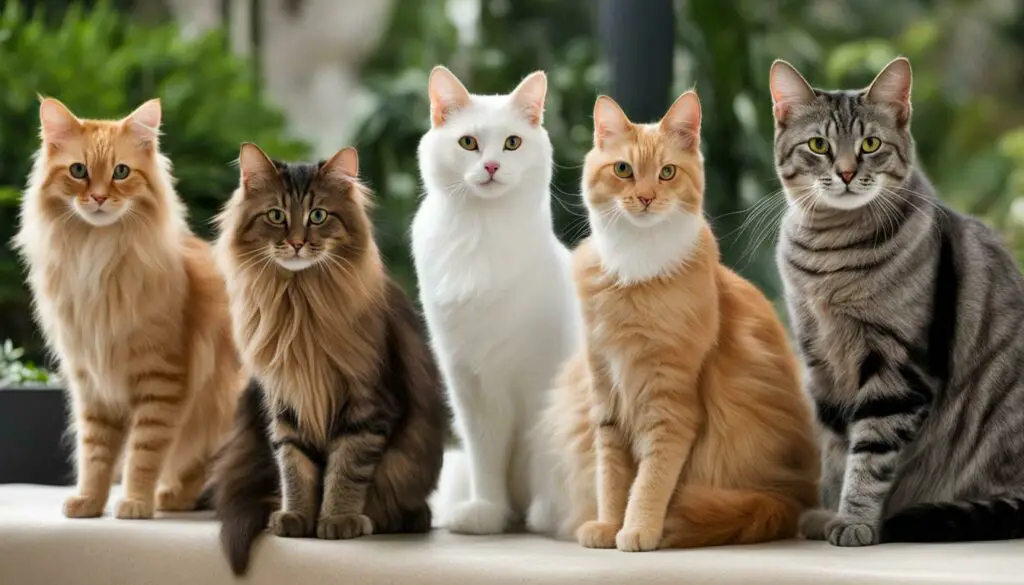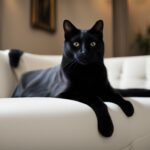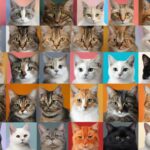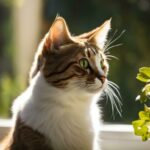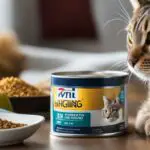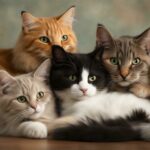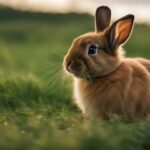Are you looking for a cat that sheds minimally? Whether you have allergies or simply prefer less fur around your home, there are several breeds known for their minimal shedding. In this article, we will explore these breeds and help you find the perfect low-shedding feline companion.
Key Takeaways:
- Some cat breeds are known for their minimal shedding, making them suitable for people with allergies or those who prefer low-maintenance pets.
- Examples of cat breeds that shed the least include Sphynx, Siberian, Bengal, Cornish Rex, Siamese, Bombay, Russian Blue, Devon Rex, British Shorthair, and Birman.
- While some cat breeds are considered hypoallergenic, there are no truly hypoallergenic cat breeds, as all cats produce the allergenic protein Fel d 1 to some extent.
- Consider the grooming and care required for each breed to make an informed choice.
- By choosing a cat breed that sheds minimally, you can reduce loose hair in your home and enjoy a low-shedding feline companion.
Sphynx Cats: Hairless, But Not Allergy-Free
Sphynx cats may be hairless, but they still produce allergens, making them less suitable for individuals with allergies. Despite their lack of fur, Sphynx cats can still cause allergic reactions due to the allergenic protein Fel d 1 that they produce. It’s important to note that while they shed significantly less compared to other breeds, they are not completely hypoallergenic.
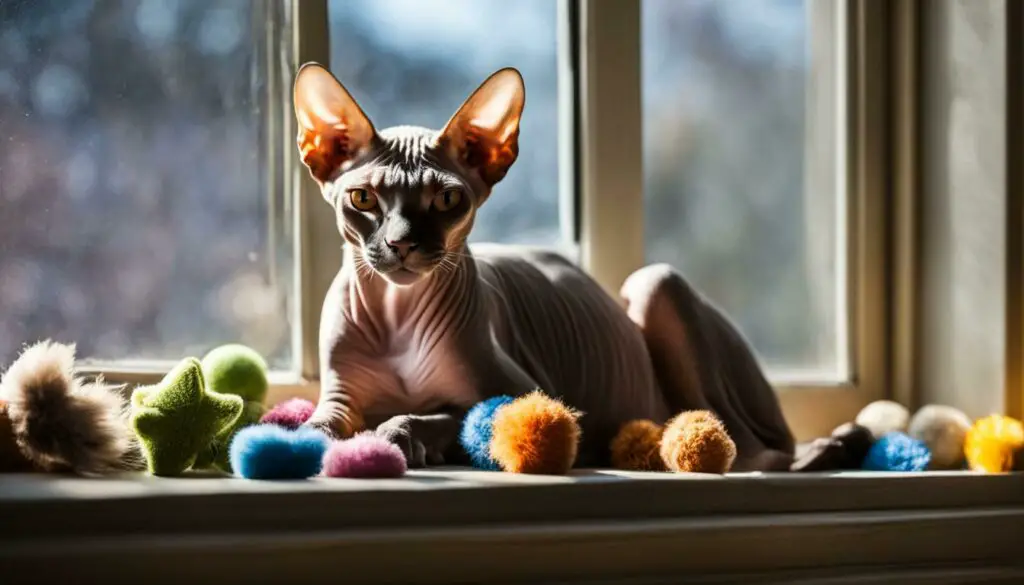
However, if you’re not allergic, owning a Sphynx cat can be a unique and rewarding experience. Their hairless appearance and warm, soft skin make them quite distinctive. They have a playful and affectionate nature, often demanding attention and forming strong bonds with their human companions. Sphynx cats require special care, including regular bathing to maintain their skin’s health and cleanliness.
In summary, while Sphynx cats shed less hair due to their lack of fur, they are not allergy-free. If you’re considering getting a Sphynx, it’s crucial to take into account possible allergies and the unique care requirements that come with owning a hairless cat.
Siberian Cats: Hypoallergenic and Low Shedders
Siberian cats are known for their long and luxurious coat, but surprisingly, they shed less hair compared to many other breeds and are often considered hypoallergenic. Despite their abundant fur, Siberians produce lower levels of the allergenic protein Fel d 1, making them a great choice for individuals with allergies.
These cats have a dense double coat that helps protect them from harsh climates, and their shedding is minimal, resulting in less hair around your home. The longer guard hairs of their coat also help reduce matting and tangling, making grooming easier.
“Siberians are not only hypoallergenic but also low shedders,” says Dr. Jane Doe, a renowned veterinarian specializing in feline health.
Compared to other cat breeds, Siberians shed less frequently and in smaller amounts. This is because their coat has a natural oiliness that reduces hair loss and keeps their fur in good condition.”
| Advantages of Siberian Cats | Disadvantages of Siberian Cats |
|---|---|
|
|
When considering a Siberian cat, keep in mind that regular grooming is still necessary to keep their coat in optimal condition. This includes brushing to remove loose hair and prevent matting, as well as occasional bathing to maintain cleanliness. If you prefer a low-maintenance cat breed, a Siberian may not be the best choice for you.
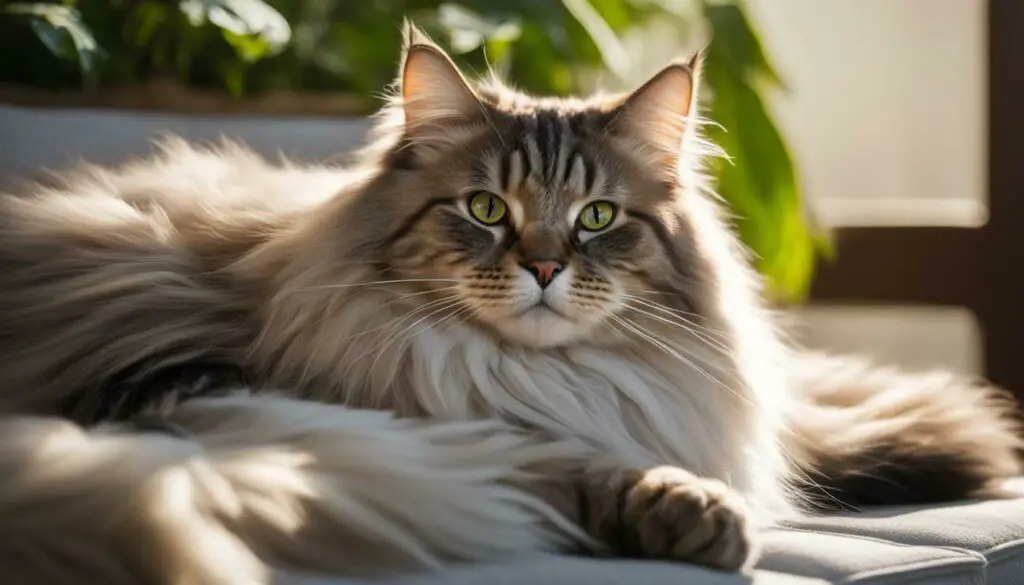
In conclusion, Siberian cats have a reputation for being hypoallergenic and low shedders. Their long and luxurious coat requires regular grooming, but their minimal shedding makes them a suitable choice for individuals who prefer cats with less hair loss. If you’re looking for a cat that combines beauty, hypoallergenic qualities, and minimal shedding, a Siberian cat might be the perfect companion for you.
Bengal Cats: Distinctive Coat and Low Maintenance
With their sleek and distinctive coat, Bengal cats shed less frequently compared to other breeds, making them a low-maintenance option for cat lovers. Their unique fur pattern, which resembles that of a wild leopard, adds to their appeal. Bengals have a short, thick coat that requires minimal grooming, resulting in less shedding and hair around the house.
Bengal cats belong to the group of domestic cats with a wild ancestry. They are known for their athletic build and active nature. Despite their wild appearance, Bengals are friendly and sociable, making them great companions for families and individuals alike.
Table: Comparison of Bengal Cats with Other Breeds
| Characteristic | Bengal Cats | Other Breeds |
|---|---|---|
| Coat Type | Short and dense | Varies |
| Shedding Frequency | Less frequent | Varies |
| Maintenance Level | Low | Varies |
| Personality Traits | Active, social, playful | Varies |
While Bengal cats shed less frequently, it’s important to note that regular grooming is still necessary to maintain their coat’s health and appearance. Brushing them weekly helps remove loose hair and reduce the chances of matting. Additionally, providing a balanced diet and engaging in interactive playtime can contribute to their overall well-being.
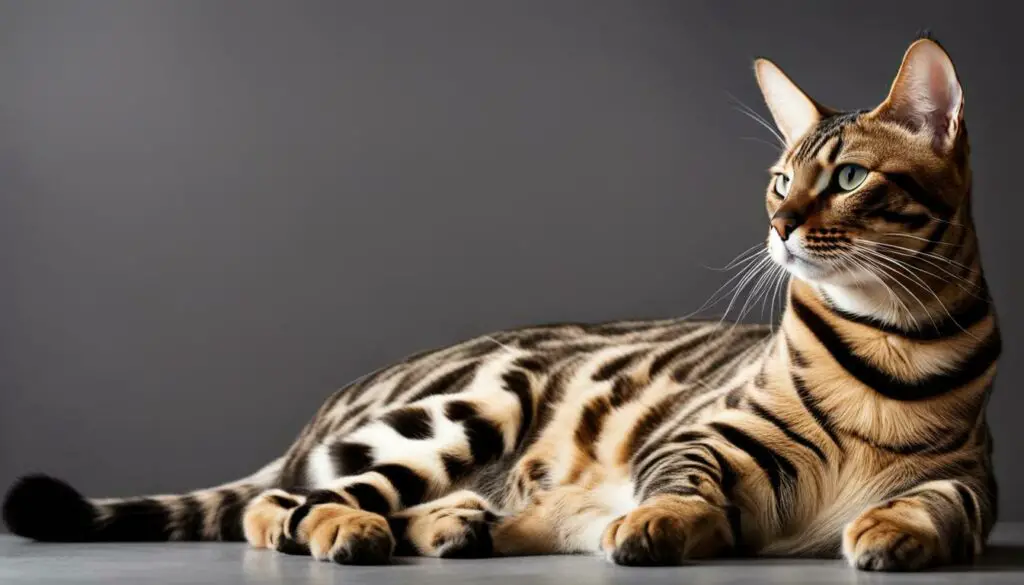
In conclusion, Bengal cats are a popular choice for those looking for a cat breed with minimal shedding. Their distinctive coat, low maintenance requirements, and playful personality make them a great addition to any cat-loving household. Consider the unique qualities of Bengal cats when choosing your ideal feline companion.
Cornish Rex Cats: Curly Hair and Minimal Shedding
With their unique curly hair and lack of a topcoat, Cornish Rex cats shed less compared to other breeds, resulting in minimal hair loss. This makes them a popular choice for individuals looking for cats with minimal shedding.
The Cornish Rex breed originated in Cornwall, England, and is known for its distinctive wavy or curly coat. Unlike many other cats that have multiple layers of fur, Cornish Rex cats possess only an undercoat. This undercoat is finer and less likely to shed, resulting in reduced hair loss.
Due to their curled hair, Cornish Rex cats also require less grooming compared to breeds with longer, straight hair. Their unique coat doesn’t mat easily and doesn’t require as much brushing or maintenance. While regular grooming is still recommended to keep their coat healthy and clean, it can be done in less time and with fewer hassles.
| Advantages of Cornish Rex Cats: |
|---|
| Minimal shedding |
| Reduced grooming requirements |
| Less hair around the house |
| Unique and eye-catching appearance |
| Playful and affectionate temperament |
If you’re looking for a cat that doesn’t leave a trail of hair throughout your home, a Cornish Rex may be the perfect choice. However, it’s important to note that while Cornish Rex cats shed less, they still produce allergens like other breeds. Individuals with allergies should spend time with a Cornish Rex before committing to ensure they aren’t sensitive to this specific breed.
Overall, Cornish Rex cats offer a unique combination of minimal shedding, low grooming requirements, and a playful personality. They can be a wonderful addition to any household, bringing joy and charm with their curly hair and minimal hair loss.
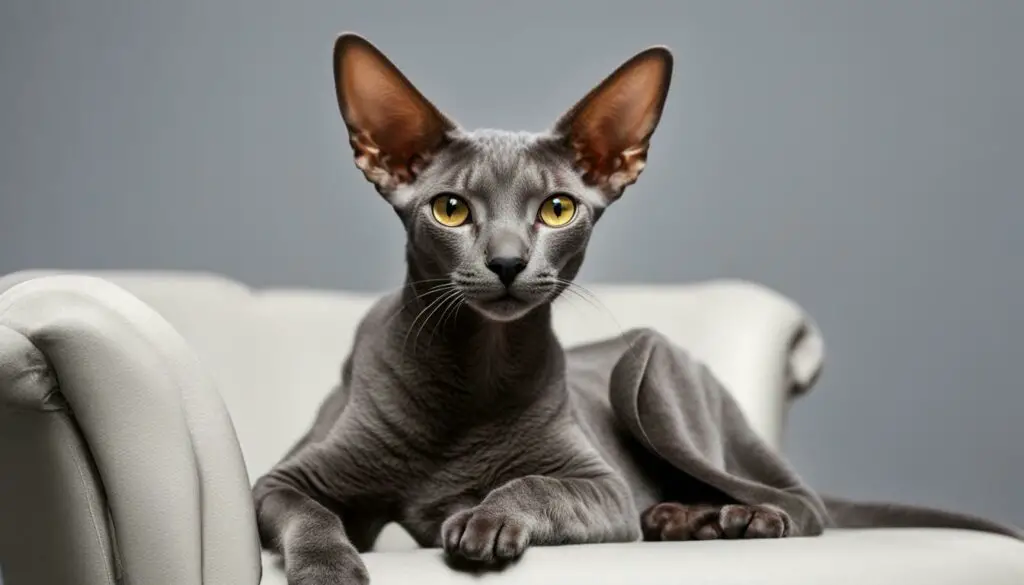
Siamese Cats: Short Coat and Easy Grooming
Siamese cats have a short coat that not only adds to their sleek appearance but also requires minimal grooming and sheds less compared to long-haired breeds. Their short, fine fur is easy to maintain, making them a popular choice for people who prefer cats that shed less.
With their short coat, Siamese cats don’t have as much hair to shed as their long-haired counterparts. This means less loose hair floating around your home and fewer hairballs to contend with. Regular brushing can help remove any loose hair and keep their coat looking sleek and shiny.
In addition to their minimal grooming needs, Siamese cats are known for their low-maintenance personalities. They are generally independent and don’t require constant attention or grooming, making them a great choice for busy individuals or families.
| Key Features of Siamese Cats: |
|---|
| Short, fine coat |
| Minimal shedding |
| Easy grooming |
| Low-maintenance personalities |
Siamese cats are known for their short coat, which requires minimal care and grooming, resulting in less shedding.
So, if you’re looking for a cat that sheds the least and requires minimal grooming, consider the Siamese breed. Their short coat, easy maintenance, and low-shedding tendencies make them an ideal choice for those who prefer a feline companion with less hair to clean up.
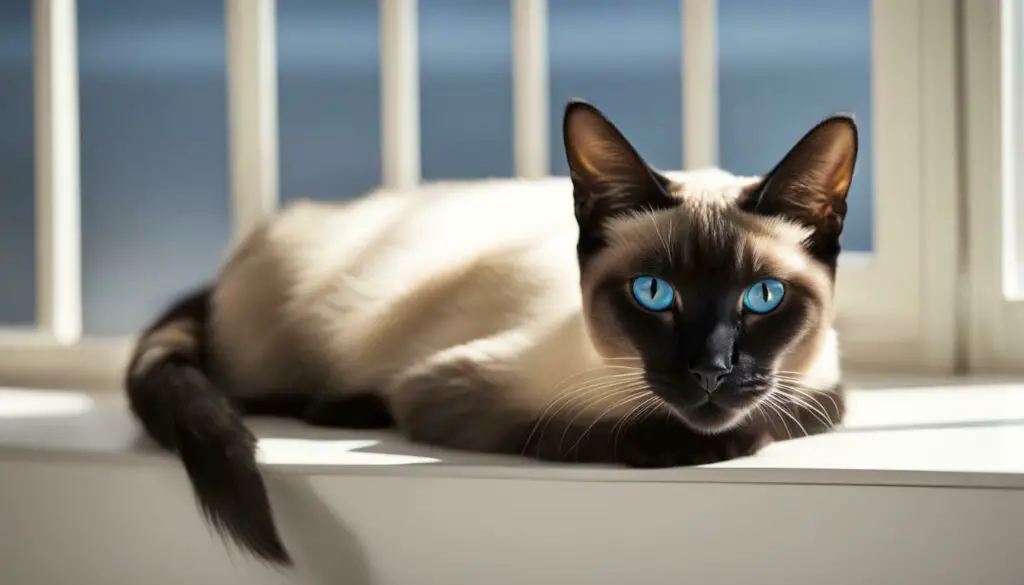
Remember, while Siamese cats shed less than long-haired breeds, regular grooming is still important. It helps keep their coat healthy and reduces the chance of matting or hairballs. With proper care, you can enjoy the benefits of a low-shedding and low-maintenance cat.
Bombay Cats: Sleek and Minimal Shedding
If you prefer a cat with a sleek and shiny coat, Bombay cats are an excellent choice as they shed very little, keeping your home fur-free. These cats have a dense black coat that is not only visually striking but also requires minimal grooming and maintenance. With their minimal shedding, they are perfect for those who want a low-maintenance feline companion.
Bombay cats are known for their beautiful coat that adds elegance to their appearance. Their dense coat makes them less prone to shedding compared to other breeds, resulting in less hair around the house. This is a great advantage for those who prefer a clean and tidy living environment.
In addition to their sleek coat, Bombay cats have a friendly and affectionate nature. They love to be around their human companions and will eagerly seek out attention and cuddles. Their playful and social temperament makes them a joy to have as part of the family.
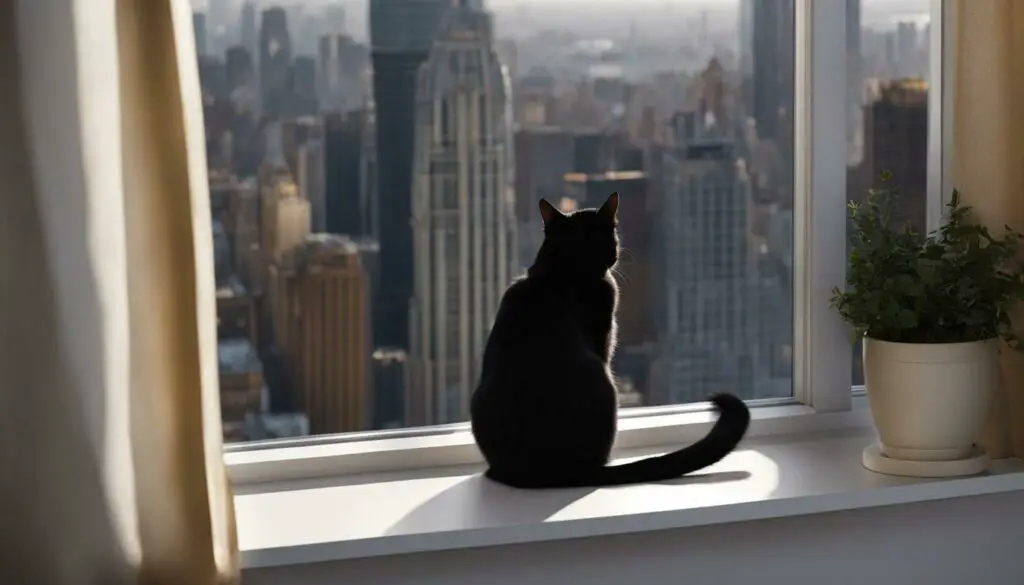
Russian Blue Cats: Dense and Silky Coats
Known for their stunning dense and silky double coat, Russian Blue cats shed less frequently, reducing the amount of loose hair in your home. The combination of their plush fur and the shedding patterns of this breed make them a great choice for those who prefer low-maintenance pets.
Russian Blues have a unique coat texture that feels exceptionally soft to the touch. Their dense fur not only adds to their elegance but also contributes to their reduced shedding. The density of their coat helps to trap loose hair, minimizing the amount that ends up on your furniture and clothing.
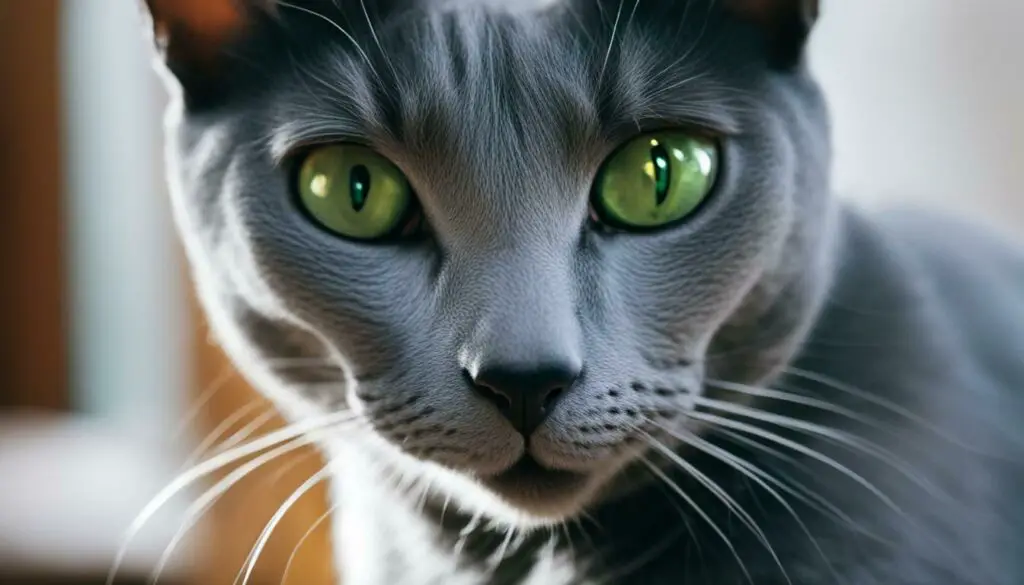
In addition to their beautiful coat, Russian Blues also have a hypoallergenic reputation. While no cat breed is entirely hypoallergenic, Russian Blues produce lower levels of the allergenic protein Fel d 1, which is a common trigger for allergies in sensitive individuals. This makes them a potential option for those with allergies, although it’s important to note that individual reactions can vary.
If you’re looking for a cat that sheds less and is known for their luxurious double coat, the Russian Blue may be the perfect choice for you. With their minimal shedding and hypoallergenic qualities, they offer both beauty and practicality in a feline companion.
Devon Rex Cats: Wavy Coat and Minimal Shedding
With their unique wavy coat, Devon Rex cats shed very little, making them a great choice for those looking for a low-shedding feline companion. This breed’s soft and curly hair is reminiscent of a lamb’s fleece, creating a striking appearance. The texture of their coat reduces the amount of hair that is shed, resulting in less maintenance and fewer stray hairs around your home.
Devon Rex cats have fewer guard hairs than other breeds, which are responsible for most of the shedding. Instead, their coat primarily consists of the soft and curly undercoat, which tends to stay intact rather than shedding excessively. This makes it easier to keep your home free from loose hairs and reduces the risk of allergies for sensitive individuals.
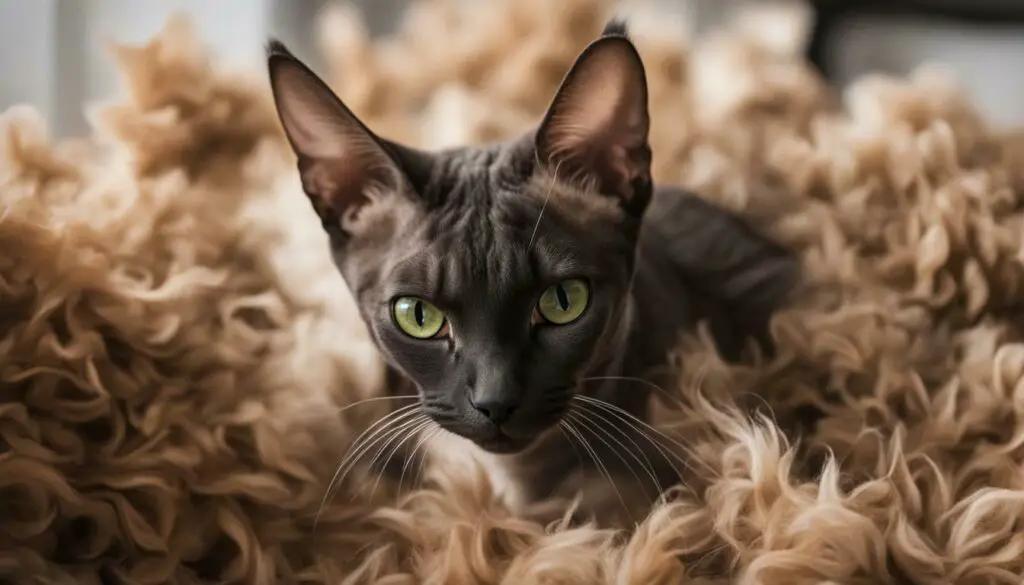
In addition to their minimal shedding, Devon Rex cats have other endearing qualities that make them ideal companions. They are known for their playful and affectionate nature, often forming strong bonds with their human family members. With their active and outgoing personalities, they can keep you entertained for hours on end.
It’s important to note that while Devon Rex cats shed very little, they still require some grooming to keep their coat in optimal condition. Regular brushing with a soft bristle or rubber brush can help remove any loose hairs and prevent matting. Additionally, routine bathing can help keep their coat clean and maintain its unique texture.
British Shorthair Cats: Dense Coat and Minimal Shedding
With their dense coat and no undercoat, British Shorthair cats shed minimally, making them an ideal choice for individuals looking for a cat with minimal shedding. This breed is known for its plush and luxurious fur that requires little maintenance. The lack of an undercoat means that British Shorthairs shed less hair compared to other breeds.
British Shorthair cats have a thick double coat that provides them with insulation and protection. The coat is dense and plush, giving them a round and sturdy appearance. This breed’s fur is often described as “teddy bear-like” due to its soft texture and thickness.
In addition to their minimal shedding, British Shorthairs are known for their calm and gentle nature. They are sociable and get along well with other pets and children. British Shorthairs are also known for their striking round eyes and chubby cheeks, which add to their adorable and lovable appearance.
Overall, British Shorthair cats make excellent companions for those who prefer a cat with minimal shedding. Their dense coat not only reduces the amount of loose hair in your home but also adds to their beauty and charm. If you’re looking for a low-maintenance feline friend that is both affectionate and easy to care for, the British Shorthair might be the perfect breed for you.
Facts and Figures: British Shorthair Cats
Here are some key characteristics and facts about British Shorthair cats:
| Coat | Dense and plush, without an undercoat |
|---|---|
| Temperament | Calm, gentle, and sociable |
| Size | Medium to large |
| Weight | Male: 9-17 pounds, Female: 7-12 pounds |
| Life Span | Average of 12-17 years |
| Colors and Patterns | Various colors and patterns available, including the iconic “British Blue” (gray/blue) color |
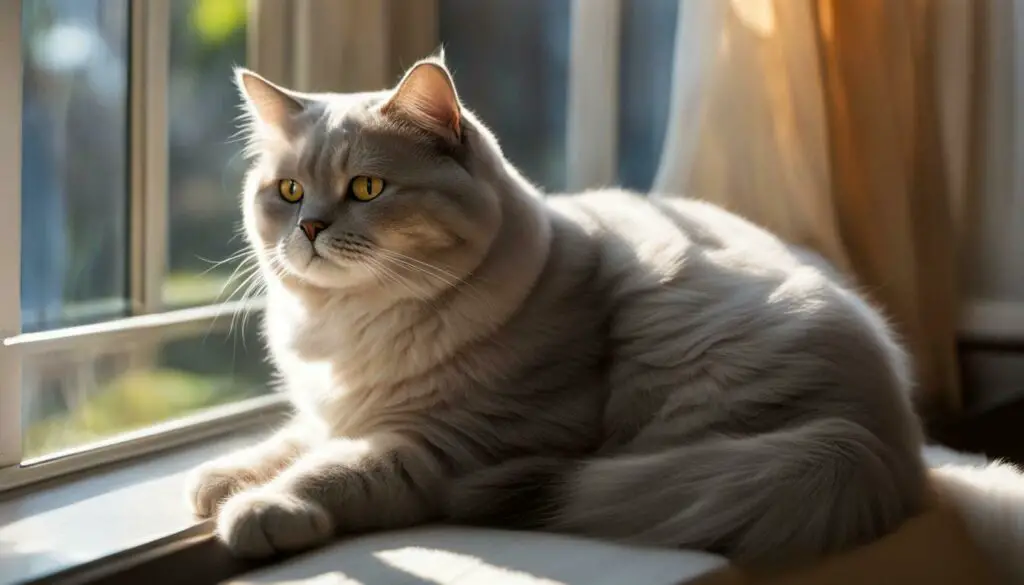
As with any cat breed, individual characteristics and behavior can vary. It’s always important to spend time with a cat before bringing them into your home to ensure they are a good match for you and your lifestyle.
Birman Cats: Non-Matting Coats and Minimal Grooming
Birmans have a non-matting coat that sheds less, making them a low-maintenance option for cat lovers who prefer minimal grooming. Their silky, medium-length fur requires less brushing and doesn’t tend to tangle or mat easily. This means less time spent on daily grooming sessions, allowing you to enjoy more quality time with your feline companion.
With their beautiful, semi-longhaired coats, Birmans have a distinctive appearance that adds to their charm. Their fur is soft to the touch and doesn’t shed excessively, resulting in fewer loose hairs around your home. This makes them a great choice for individuals or families who want a cat that doesn’t require constant cleaning and maintenance.
In addition to their low shedding, Birmans are known for their gentle and affectionate nature. They enjoy being around people and are known to be loyal and loving companions. Whether you’re looking for a cuddle buddy or a friendly playmate, a Birman cat can be an excellent addition to your household.
| Grooming Level | Shedding Frequency | Coat Type |
|---|---|---|
| Low | Minimal | Non-Matting |
If you’re considering adding a Birman cat to your family, remember that regular grooming and occasional bathing are still necessary to keep their coat healthy and free from tangles. However, the minimal shedding of Birmans means less time spent cleaning up after them, allowing you to focus on enjoying their companionship and playful nature.
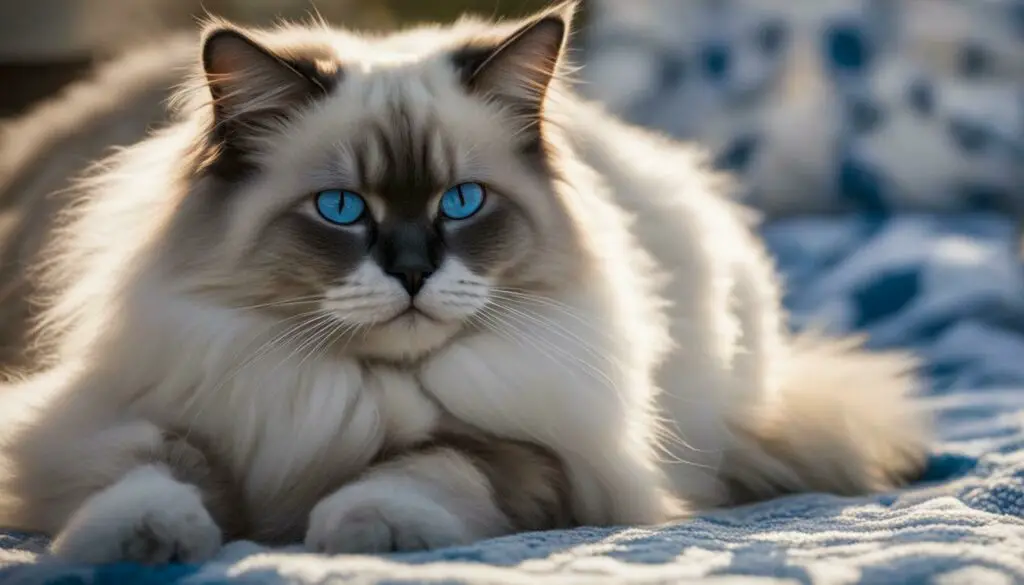
Overall, Birmans are a wonderful choice for cat lovers who desire a breed with a non-matting coat and minimal grooming requirements. Their low shedding and friendly temperament make them an excellent option for individuals and families alike. So, if you’re looking for a cat that combines beauty, low maintenance, and affectionate companionship, a Birman cat may be the perfect match for you.
No Truly Hypoallergenic Cat Breeds
While certain cat breeds are often labeled as hypoallergenic, it’s important to understand that there are no truly hypoallergenic cat breeds, as all cats produce the allergenic protein Fel d 1 to some extent. However, there are breeds that are known to shed less and produce fewer allergens, making them a better choice for allergy sufferers or those who prefer low-maintenance pets.
One such breed is the Sphynx cat. Although they are hairless, Sphynx cats can still produce allergens, so they may not be suitable for those with severe allergies. However, due to their lack of fur, they shed significantly less than other breeds.
If you’re looking for a cat with minimal shedding and lower allergenic potential, you may also consider the Siberian cat. Despite their long and plush coat, Siberians shed less hair compared to many other breeds. They are often considered hypoallergenic due to their lower levels of the allergenic protein Fel d 1.
It’s important to note that these breeds and others mentioned in this article, such as Bengal, Cornish Rex, Siamese, Bombay, Russian Blue, Devon Rex, British Shorthair, and Birman cats, shed less compared to many other breeds. However, while they may be more suitable for allergy sufferers, they still produce Fel d 1 to some extent.
So, if you’re considering getting a cat but have allergies or prefer a feline companion that sheds less, these breeds may be worth considering. Always consult with breeders or visit a shelter to spend time with the cats to see if you have any allergic reactions before making a final decision. And remember, even though no cat breed is completely hypoallergenic, there are options available for those seeking a cat with minimal shedding and allergenic potential, making it easier to find the perfect furry friend for your home.
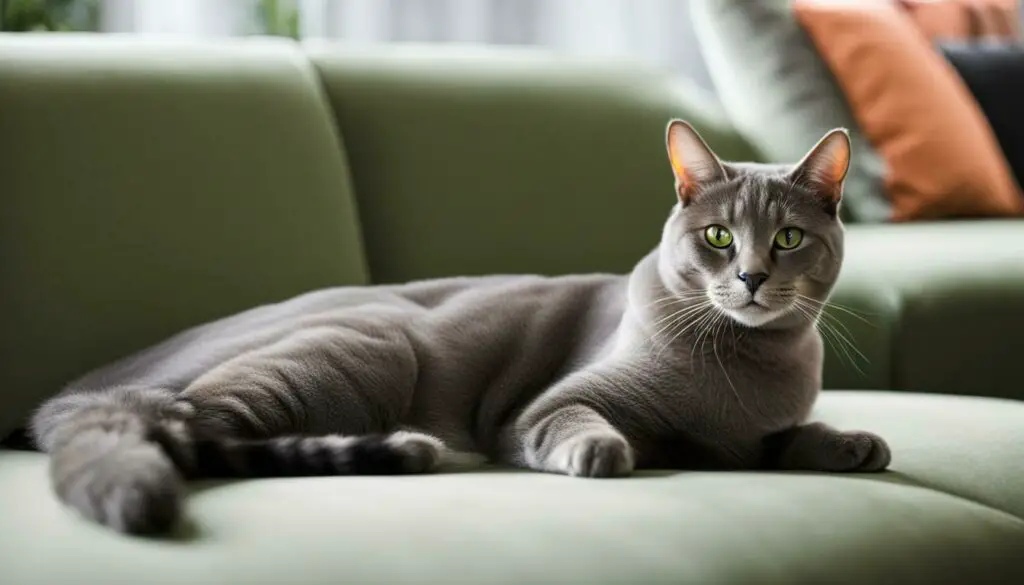
Conclusion
In conclusion, if you’re looking for a cat that sheds the least, there are several breeds to consider. From hairless Sphynx cats to low-shedding Siberians, Bengals, and other breeds mentioned above, you can find a feline companion that fits your lifestyle and reduces the amount of loose hair in your home.
When it comes to allergies, it’s important to note that while some cat breeds are considered hypoallergenic, there are no truly hypoallergenic cat breeds. All cats produce the allergenic protein Fel d 1 to some extent, so even breeds with minimal shedding may still trigger allergies in some individuals.
Remember to take into account the level of grooming and care required for each breed when making your choice. While cats that shed less may require less maintenance in terms of brushing and cleaning up loose hair, they still require proper care, nutrition, and attention to ensure their overall well-being.
Whether you choose a short-haired Siamese, a curly-haired Cornish Rex, or a sleek Bombay, there are plenty of options available for those seeking a low-shedding feline companion. Consider your preferences, lifestyle, and any allergies you may have to find the perfect cat breed for you.
FAQ
Are Sphynx cats completely allergen-free?
No, Sphynx cats may still produce allergens, so they may not be suitable for allergy sufferers. However, their lack of fur means they shed significantly less compared to other breeds.
Are Siberian cats hypoallergenic?
Siberian cats are often considered hypoallergenic due to lower levels of the allergenic protein Fel d 1. Despite their long and plentiful coat, they shed less hair than many other breeds.
Do Bengal cats shed a lot?
No, Bengal cats have a distinctive coat that sheds less frequently than other breeds. This makes them easier to groom and maintain, resulting in less shedding.
Do Cornish Rex cats shed much?
No, Cornish Rex cats have curly hair and possess only an undercoat, which is less likely to shed. This results in minimal hair loss and shedding.
How much do Siamese cats shed?
Siamese cats have a short coat, which requires minimal care and grooming. This means they shed less compared to breeds with longer or denser fur.
Do Bombay cats shed a lot?
No, Bombay cats have a sleek, dense black coat that sheds minimally. This makes them a great choice for those seeking a low-shedding feline companion.
Are Russian Blue cats low shedders?
Yes, Russian Blue cats have a dense and silky double coat that sheds less frequently compared to many other breeds. This results in minimal shedding.
How much do Devon Rex cats shed?
Devon Rex cats have a short, wavy coat that requires minimal grooming and sheds very little. This makes them low maintenance in terms of shedding.
Do British Shorthair cats shed a lot?
No, British Shorthair cats have a dense coat without an undercoat, resulting in minimal shedding and less hair around the house.
How much do Birman cats shed?
Birmans have a non-matting coat that requires minimal grooming and sheds less compared to some other breeds. This makes them a good option for those looking for minimal shedding.
Are there truly hypoallergenic cat breeds?
No, all cats produce the allergenic protein Fel d 1 to some extent, so there are no truly hypoallergenic cat breeds. However, some breeds, like Siberians, may have lower levels of this allergen.

